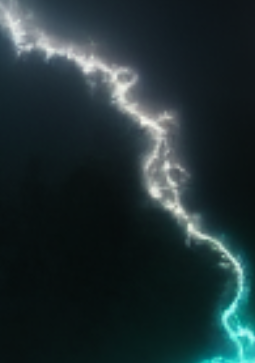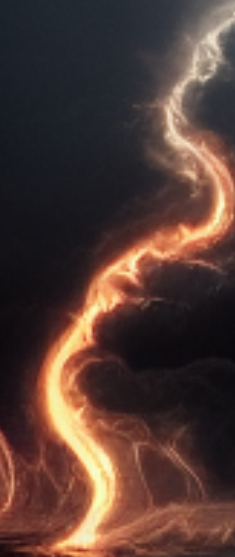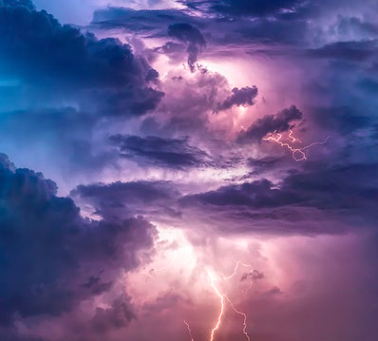Lightningstruck
"Don't go out in the storm, Tim - come quickly - we've got to get into our district's dimension. "Yes, I know you want to watch the lightning - I did, too, when I was your age. But it's not worth it - you don't want to end up like your uncle, do you?"Storms - one of the rarest and most dangerous phenomenons in the sky. It's only natural that many myths have been created with storms at the center - they're both wonderful and terrible. Treacherous clouds, lifegiving rain. Looming thunder, beautiful lightning. It's the lightning that's so beautiful and so deadly. You may have heard that lightning never strikes twice - well, it doesn't need to. Not when every Skydweller who finds themselves at the end of a lightning bolt finds themselves lightningstruck.-Mother to her dragonets
There's no denying the danger of a lightning bolt. Aside from the burns and terrible, blinding, pain, there's also the risk of cardiac arrest. But aside from that is the magical traces still in a lightning bolt when it's close to the storm cloud - traces that ground dwellers can't fathom, but are all too real for the Skydwellers.
It's unclear what the true source of lightning's magic is. Yes, the billion joules of energy in a single bolt is deadly even for the hardiest of dragons, and all that energy can do strange things to the body - especially magical bodies. But storm experts have recently begun speculating on the possibility of small lightning sprites (similar to ice sprites) that are attracted to the storm and, once unleashed to a bolt's victim, wreak havoc on their body and mind.
Whatever the cause, the chance of getting lightningstruck is a fear that's inherent in every Skydweller - no matter how rare storms are, and regardless of whether they've seen lightning before.
Symptoms
It all begins with the initial strike. From the very moment that the lightning reaches its victim, they are forever changed. For a few lucky people, the aftereffects have been mild. But for most, they're dramatically catastrophic, leaving the patient forever changed.
Immediately after the strike (if a sudden bout of amnesia doesn't send them plummeting to the ground), a victim will find themselves frighteningly vulnerable to the cold of the sky thanks to the change in their nervous system. Unless they're immediately rushed to shelter, placed in an insulated room under a thick mat of blankets, and laid next to a fire, they might not survive the next few hours.
If they do manage to survive their first few days, they'll find themselves confined to a heated building without special coats (or, in a dragon's case, special clothing tailored for them) to protect them from the cold. The lightning will also affect their ability to replace red blood cells, and the thin atmosphere will keep them in a bed for at least a month.
Upon discovering their new paralysis, a lightningstruck patient will descend into a state of panic and break down into tears, screams, and sometimes even seizures. They'll be unable to control themselves, and will have to be restrained - sometimes forever. After they calm, they'll become horribly depressed, often refusing to eat for weeks on end. All this happens in just the course of a month or two. Eventually, once the victim is calm and finally ready to adjust to a new life, they'll start developing the unique, long-term symptoms. Most of these include erratic behavior - random bursts of energy, mood swings, dramatic changes in diet and shortened attention spans. The average lightningstruck patient will be unable to sit still one minute, bouncing with energy and motivation and frenzied ideas, then depressed, still, and ready to fall asleep forever the next. Their life will blur into one long day, filled with bursts of frenzied work and then exhausted chills. But one of the most dreaded of these symptoms is loss of sight. It's terrifyingly inevitable - only a few lucky victims escape this fate. It starts out with sharp migraines, then fuzzy tunnel vision. Eventually, the victim's vision will go black entirely, something they'll live in constant fear of. When it eventually happens, the final stage of the lightningstruck begins.
During that time, they'll be extremely sensitive to anything that touches their skin, something they'll never recover from. Instead, they'll become numb to all sensations, a desperate attempt from their body to take away the pain of feeling. This leaves them desensitized and susceptible to burns or chills without the ability to tell if they need to pull away.
Another common symptom is that of slow reflexes, leaving another scar on one of the most important habits of a Skydweller - flight. If a victim is lucky, constant exercise and activity will succeed in fighting to get back their old abilities and alertness.
Others are not so fortunate. Most of the lightningstruck will see the inevitably slow loss of the ability to use their limbs, if they haven't amputated them already. It'll start out as lethargy - frequent naps, or sitting for hours on end, staring into the depths of their now-constant fire. Without the ability of sensation, they won't realize that they haven't moved any of their appendages for days - with humans, their fingers will often stop first, but with dragons, their wings will cease to work.
Upon discovering their new paralysis, a lightningstruck patient will descend into a state of panic and break down into tears, screams, and sometimes even seizures. They'll be unable to control themselves, and will have to be restrained - sometimes forever. After they calm, they'll become horribly depressed, often refusing to eat for weeks on end. All this happens in just the course of a month or two. Eventually, once the victim is calm and finally ready to adjust to a new life, they'll start developing the unique, long-term symptoms. Most of these include erratic behavior - random bursts of energy, mood swings, dramatic changes in diet and shortened attention spans. The average lightningstruck patient will be unable to sit still one minute, bouncing with energy and motivation and frenzied ideas, then depressed, still, and ready to fall asleep forever the next. Their life will blur into one long day, filled with bursts of frenzied work and then exhausted chills. But one of the most dreaded of these symptoms is loss of sight. It's terrifyingly inevitable - only a few lucky victims escape this fate. It starts out with sharp migraines, then fuzzy tunnel vision. Eventually, the victim's vision will go black entirely, something they'll live in constant fear of. When it eventually happens, the final stage of the lightningstruck begins.
"Some say it's magic. Some say that we've manifested powers as a result of the shock. But there's no denying the strange events that keep happening to me, ever since I lost my sight. Rather than slowing down, I'm...speeding up. I can't stop. I'm doing things I never thought I could before - and that scares me. They're...not normal things. This isn't a blessing. It's a curse. I - oh, goodness, I'm feeling a sudden urge to go whip up a new dessert. No need to guide me - I know the way just fine. Yes, I know I'm blind."The most common sensation (yes, sensation) that the victims have reported is a feeling of aching cold in their chest. After that, they'll go into a frenzy, doing things that they have no experience or knowledge of - writing in strange languages, professing random spurts of poems, whipping up new recipes, flying at untold speeds. At first, they do this all in total blackness. Then, they've reported being able to see again - in a strange way. Little waves in their vision, like echolocation, and all through electricity. Once a victim begins this frenzy, they'll never stop. They barely sleep. They keep working until they die. Some days, they're better, and can control themselves. Others, they'll lash out at anyone who disturbs them. This is particularly alarming, considering that at this point, most who touch them will get a large electric shock.-a lightningstruck victim
Prognosis
"It was absolutely horrible - I thought that was the end. I couldn't think, couldn't breathe - couldn't do anything but just exist in the terrible, blinding pain. When I came to, I knew it - knew that I would never be the same."All surviving lightningstruck patients must struggle to adjust to their new life. The physcial limits - including the huge scars now tracing over their skin or scales - as well as the mental ones. Their friends and family, too, must make decisions about how they're going to react to this. It's a huge struggle, and often many lightningstruck find themselves locked away and confined, where they can't hurt themselves or anyone else. Some of them have adjusted well, managing to control themselves and dutifully taking their calming sedatives every morning. Occasionally, however, they'll fall into the frenzied state that most lightningstruck perpetually exist in. One such person was Arthur Bookshone, whose journals have been vital in piecing together Skydweller history. Most of the time, he kept himself confined to a special heated room, working at his desk. But every so often, he'd slip into a craze where he'd not sleep for weeks on end, writing in ancient languages and speaking all kinds of terrible prophecies.-Lightning victim
Some people pity me - tell me that it's a sad life I live. In some aspects, they're right. Half of my mind is always in a torturous frenzy. But on the days when the other half is the dominant one, then it's not so bad. I am still alive after all, and I have a family who cares about me enough to keep me that way. For that, I am grateful.-from the journal of Arthur Bookshone
Shock wave caused by lightning
Type
Magical
Origin
Natural
Cycle
Chronic, Acquired
Rarity
Extremely Rare
Life as a lightningstruck
In the sky, there are almost no ailments - almost no one ever gets more symptoms than a cold, even if they've been infected with the nastiest of viruses. Everyone's healthy as can be, and all their senses are the keenest ever. Skydweller's adaptive bodies and fast reflexes turn even the worse injuries into naught more than a scratch. There is no such thing as a crippled, as the blind and the deaf, or the invalid. So something as final and terrible as being lightningstruck is a devastating blow to one's life.
"You never realize that you've taken your health for granted until you've lost it."-Crimsoneye, lightningstruck victim
It certainly is a struggle. There are currently five registered lightningstruck in the sky, each of them with varying degrees of symptoms. They each wear special insulated clothing each day, and take special sedatives to keep themselves calm. Three of them are blind, and the other two half paralyzed. They're each taken care of by their family, friends, and Bonds. Occasionally they have to be restricted because they're so worked up. For them, life is one step at a time - one step, as their bolt's thunder echoes forever in their ears.
| Studies of lightning
Partially thanks to the lightningstruck condition, a few studies have been made of lightning and storms. This, of course, has been made somewhat difficult by the fact that storms themselves are incredibly rare high in the sky. Whenever a storm does roll around, a few brave scientists jump at the chance to study the clouds, rain, thunder, and lightning, risking becoming lightningstruck themselves in an effort to learn more about the condition. It's a tricky business. They've collected rain and cloud samples, carefully recording voltage, brightness, and decibel levels in order to learn more about the lightning. They've also carefully tested lightningstruck patients in order to discover more about the exact process and chemical changes that lead to being lightningstruck. Their research is somewhat obscured by the fact that a large part of the process is magical. This is what's given rise to the theory of rare and vengeful lightning sprites at the root of the condition. A few of them are reported to have been spotted, but it's unclear how reliable those sightings have been. Research about the condition continues, and many ambitious scientists jump at the chance to capture a lightning sprite (if they're real) for further study. |
Beginning of the lightningstruck
The first lightningstruck were reported during the Ashes War, where most of the battles were often fought in bitter storms. At least two hundred lightningstruck were reported following the Thunder Battle, and many of them died.
In an effort to prevent this from happening again (and solving an important political conundrum), most Crysphic scholars shortly after the war were assigned on figuring out how to aid the lightningstruck, and they developed the basics of the rudimentary care system that evolved into the care system for lightningstruck used today.
Related:








Comments